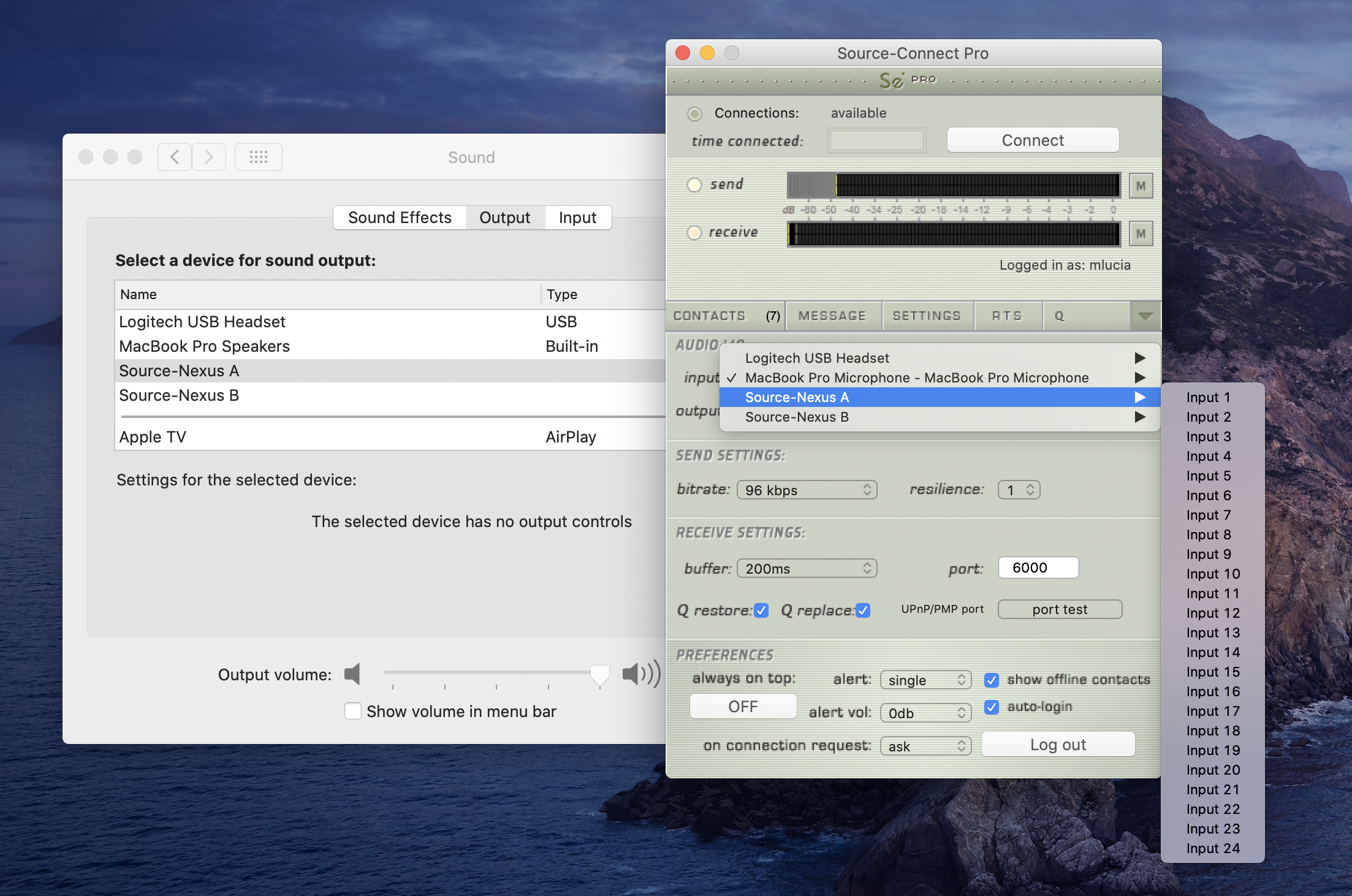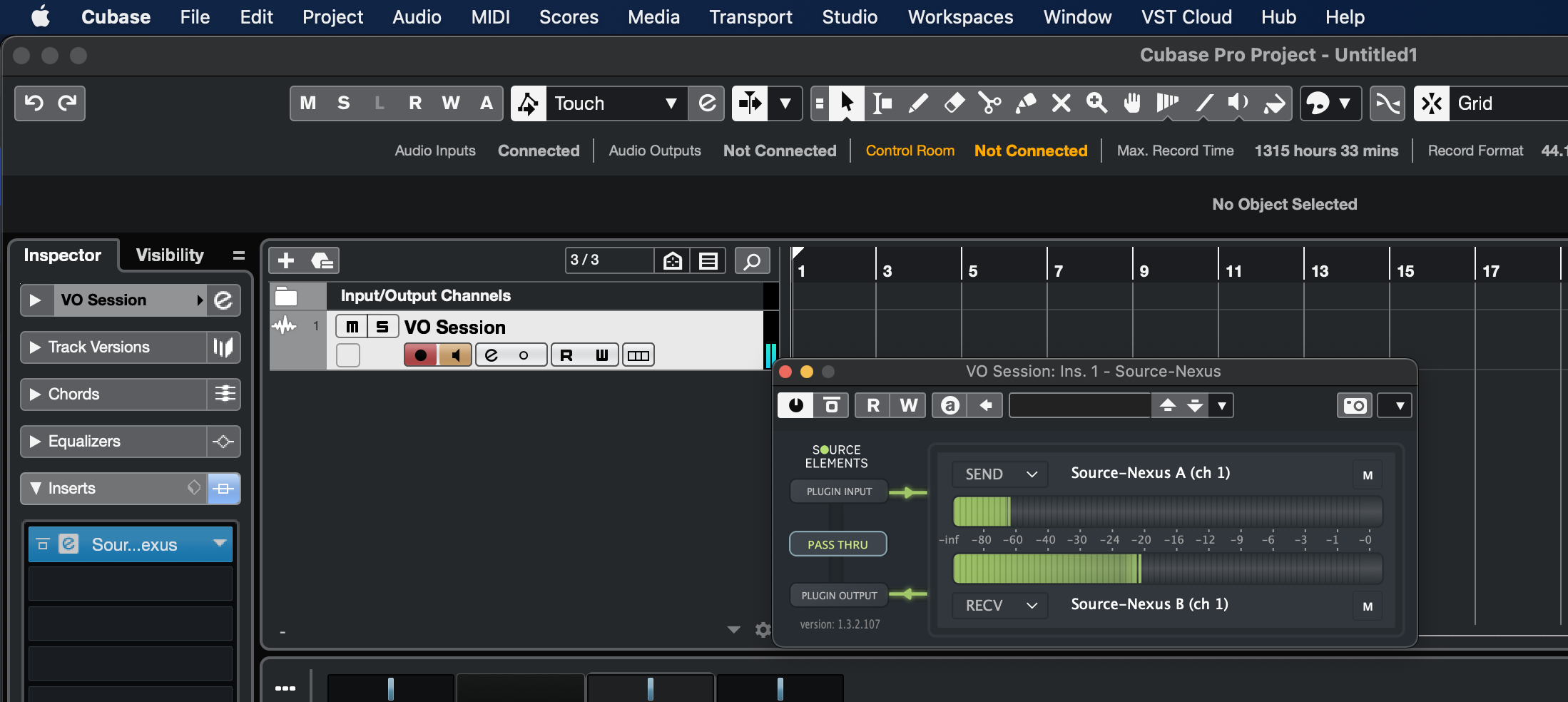Introducing Source-Nexus I/O
This article is part of the Source-Nexus I/O User GuideSource-Nexus I/O is an audio application router for AAX, VST and Audio Units hosts for both macOS and Windows. Record remote voiceover from Source-Connect directly in Final Cut or Media Composer, playback iTunes to Pro Tools, even patch Pro Tools to and from Nuendo, Logic, Reaper and more. All at the same time!
The possibilities are endless: opens an entire new world for application integration with Pro audio users and their studio environment.
You can now "patch in" any software such as phone applications, metering, encoders, decoders, external processors, other audio workstations, video editors, even a browser web page!
For Mac, it supports any CoreAudio application that can send or receive audio on channels one or two of your selected audio device, such as iTunes or QuickTime, or Advanced audio applications where you can specify your channel I/O to send/receive on the first two channels.
What's new with Source-Nexus I/O?
Source-Nexus I/O version 1.4 was launched together with the Source-Nexus Suite. Please check the linked article for a full list of features & upgrades. The following are some of the highlights:
- Native Apple Silicon support.
- Installing over a previous version on macOS now retains the previous audio device configuration.
- Uninstalling on macOS removes the entire configuration, including all custom audio devices.
Why do I need Source-Nexus I/O?
Source-Nexus I/O allows you to directly integrate any application’s audio with your DAW without using external cables. With the AAX/VST and AU (Mac only) plugins, Source-Nexus I/O allows all CoreAudio (Mac only) audio applications to record, and be recorded, from your timeline.

It includes two distinct drivers, so you can use Source-Nexus I/O with any application and not get internal loopback. A traditional mixer has a "Mix Minus" setup or a “Send/Receive" setup to feed to- and get a return from- an external system. These setups require two busses or audio paths that are separate. You would not want to use the same path to send and monitor the return signal as that would cause a feedback loop. Because many applications can only access channels one and or two the only method to separate the signals for these applications is to provide two bussing layers (A and B) so that channels 1 & 2 can be used for Input and Output (or ‘Send’ and ‘Receive’), but separated by different driver layers (A and B).
Table of Contents